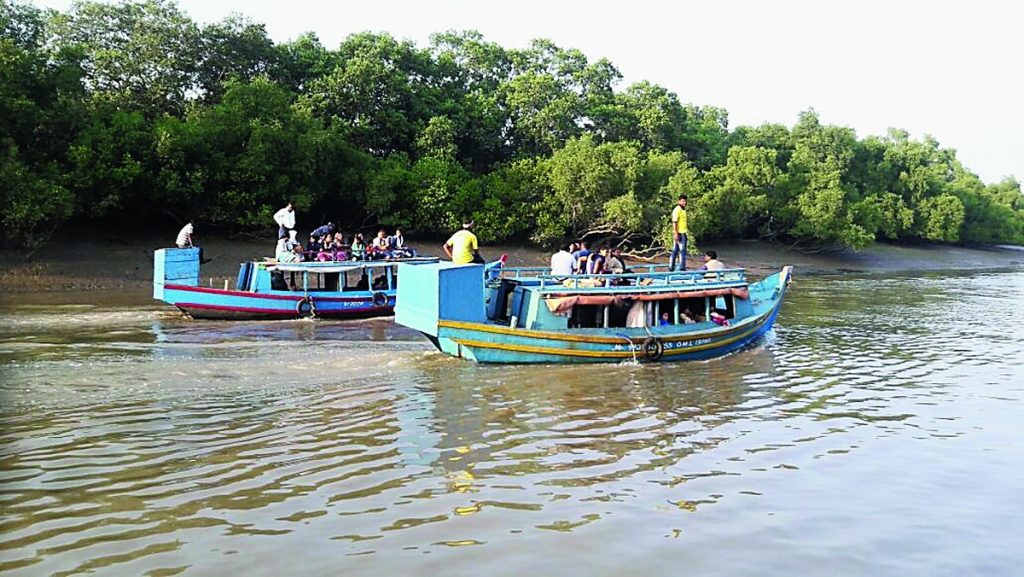Kendrapara: As summer season draws near, the famed Bhitarkanika wetland, a Ramsar site sheltering the Bhitarkanika National Park and its rich flora and fauna in its lap, is in impending danger with the flow of freshwater to the eco-sensitive area rapidly declining. The water crisis has become quite evident as deer from the forest areas of Mahakalapara have started straying into human habitats. The matter came to the fore after villagers in Mahakalapara area caught a deer when it had strayed into their village, Thursday. The wetland feeds on freshwater from Mahanadi, Baitarani, and Brahmani rivers and their distributaries.
However, with the state government launching various projects on Mahanadi and Baitarani and the neighbouring Chhattisgarh constructing barrages on the Mahanadi upstream, the flow of water to the wetland has diminished to a great extent. The launching of various projects on these rivers without conducting proper survey in Bhitarkanika and Kendrapara district has led to the situation. As a result, Mahanadi is witnessing a rapid decline in water level ahead of summer. Environmentalists apprehend Bhitarkanika might face an acute water crisis within the next fortnight. Environmentalists Hemant Kumar Rout, educationist Bhuban Mohan Jena, reader Khitish Kumar Singh, Srikant Nayak, and social activist Sanjay Behura said that the absence of freshwater will result in the destruction of the mangroves on the wetland. The rich biodiversity of Bhitarkanika draws tourists and nature lovers to Odisha from all over the world. The mangrove forest here, which acts as a natural shield against calamities like cyclones, storm surges and tsunami, requires 60 per cent saline water and 40 per cent freshwater for its growth. Lack of freshwater has led to the growth of casuarinas on the seacoast. Out of the 480-km long coastline in the state, the mangroves are spread over 222 sq km area.
However, Kendrapara has just 48- km long coastline but 183 sq km area in the district has mangrove forest cover. The river system supplying freshwater to Bhitarkanika will soon become defunct with water levels declining in the rivers. As if this was not enough, the Bhubaneswar Municipal Corporation (BMC) has decided to lift 130 million litre of water daily from the Mahanadi at Mundali in Cuttack district for supply of drinking water to the residents in the Capital city. Earlier, the state government had decided to tap the Mahanadi water through an in-stream storage structure at Santara under Kujang block in Jagatsinghpur district and supply drinking water to the residents in Kendrapara district. Construction of two mega drinking water projects is underway on the Mahanadi for supply of drinking water to the residents of 200 villages under Mahakalapara and Marshaghai blocks of Kendrapara district. The river’s water, apart from fulfilling drinking water needs of people at various places, is also supplied to scores of industries which have come up in the state. The exploitation will lead to a water crisis in the Mahanadi and other rivers and water bodies in the system such as Birupa, Chitrotpala, Luna, Karandia as well as Kendrapara and Pattamundai canals.
As a result, the flow of freshwater to Bhitarkanika downstream will dry up. Similarly, water flow from Baitarani river to Bhitarkanika has also reduced due to supply of the river water to industries and conservation in barrages. Moreover, construction of a mega drinking water project on Kharasrota river, a distributary of Brahmani, for supply of drinking water to Bhadrak is also reducing the water flow to Bhitarkanika. Bhitarkanika was getting Brahmani river water all round the year. However, supply of the river water to industries and its use for drinking water projects are affecting the water flow to Bhitarkanika. Freshwater should flow through Bhitrakanika into sea to ensure the protection of mangroves. However, the government is yet to implement any plan in this regard. Moreover, it is yet to conduct any review on the volume of freshwater that is flowing into Bhitakanika wetland from these rivers, the environmentalists added.
